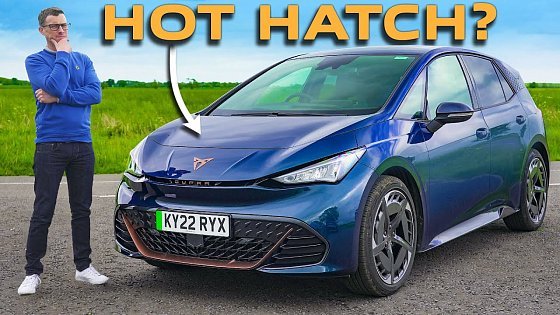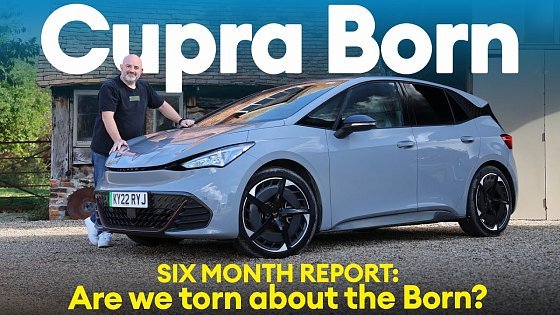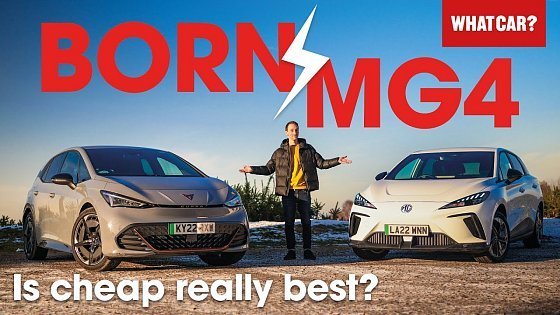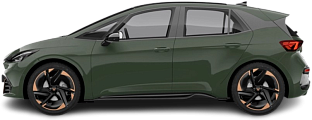Video Summary
The Cupra Born looks more aggressive than the Volkswagen ID.3. The exterior has copper accents. The side profile is boxy, like a Hyundai IX20 or Nissan Note.Even in the V2 spec with 19-inch alloy wheels, the Cupra Born is handsome. V3 versions have 20-inch alloy wheels.
The interior is stylish, comfortable, and well-designed. It has a family-friendly look because of a higher roofline.
Entry and exit from the vehicle are easy, due to the higher roofline, which might be beneficial to people who suffer from mobility issues.
The driver's seat offers a good level of adjustment, with manual adjustments, and steering rake and reach, with a pivoting instrument binnacle, but for a sportier feel check out the Volkswagen ID3.
Interior quality is good. Fabric is used on the seats. Soft-touch plastic is on the upper dash. There is also fabric material behind the instrument binnacle and on the center console. The door panel has what feels like Alcantara.
Cubby spaces are well-thought-out, with decent size door pockets. In the center console is covered storage for two rubber-lined cupholders, USB-C charging inputs, and a wireless charging pad. There is no through-loading in the trunk, and no pull-down armrest in the back seats. The V3 spec has these features.
Rear windows are a nice size, and open 90% of the way down.
The instrument panel has a clear display, with no bombardment of information. As for the styling, it reminds of the Hyundai IX20 or perhaps even the Nissan Note.
Driving is easy and comfortable, with a refined feel.
The A-pillars are thick and a blind spot. Wing mirrors are a good size, but do not have blind-spot monitoring even on the highest trim. The reviewer mentions high 0-60 time on this heavier car. The driving is a little fidgety at low speed.
Overall, the interior and the exterior styling makes it an electric car with an aggressive, sporty hatchback look and a "warm hatchback" feel. But in some important respects, like available space, interior design, or user interface it is behind other offerings. The user has to be aware that a few of its rivals offer far superior value.
Charging the 58 kWh battery from 10 to 80% uses 75 kW, and is expected to take about 35 minutes.






